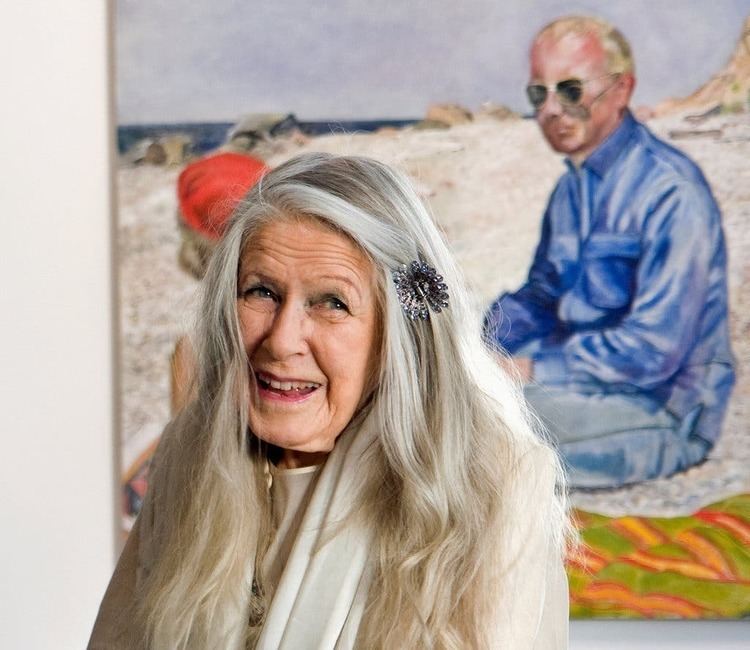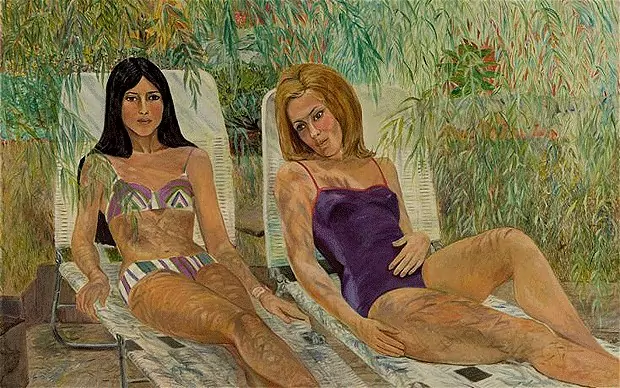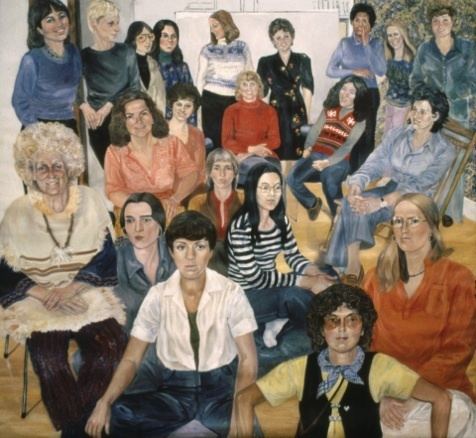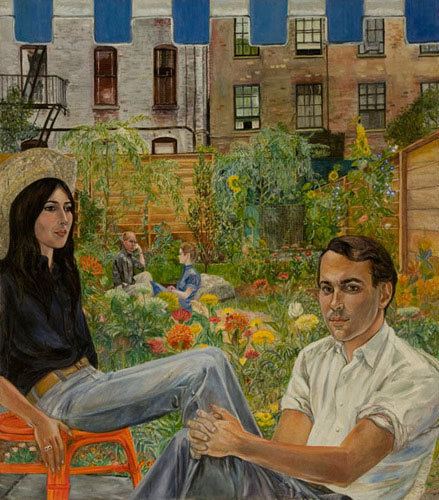Nationality Welsh-American Name Sylvia Sleigh | Role Artist Known for Painting | |
 | ||
Died October 24, 2010, New York City, New York, United States | ||
Sylvia Sleigh (Llandudno, Gwynedd, Wales, 8 May 1916—24 October 2010, New York, NY) was a Welsh-born naturalised American realist painter.
Contents
- Sylvia sleigh turkish bath
- Who was Sylvia Sleigh
- Early life and education
- Work and feminism
- Recognition
- References

Sylvia sleigh turkish bath
Who was Sylvia Sleigh?
Early life and education

Sleigh studied at the Brighton School of Art. She moved to London in 1941 after marrying her first husband, Michael Greenwood. Her first solo exhibition was in 1953 at the Kensington Art Gallery. Sleigh met her second husband, Lawrence Alloway, a curator and art critic, while taking evening classes at the University of London; they married in 1954 and moved to the United States in 1961. The following year, Alloway became a curator at the Solomon R. Guggenheim Museum.
Work and feminism

Around 1970, from feminist principles, she painted a series of works reversing stereotypical artistic themes by featuring nude men in poses that were traditionally associated with women, like the reclining Venus or odalisque. Some directly alluded to existing works, such as her gender-reversed version of Jean Auguste Dominique Ingres's The Turkish Bath (1973), which depicts a group of art critics, including her husband Lawrence Alloway (reclining at the lower right). Philip Golub Reclining (1971) similarly appropriates the pose of the Rokeby Venus by Diego Velázquez. This work also presents a reversal of the male-artist/female-muse pattern typical of the Western canon and is reflective of research into the position of women throughout the history of art as model, mistress, and muse, but rarely as artist−genius. For example, throughout her career, she painted over thirty works that feature her husband as her subject. While somewhat idealized, Sleigh's figures remain highly individualized.

In her male nudes, her subject "is used as a vehicle to express erotic feelings, just as male artists have always used the female nude" As seen in her works, such as Paul Rosano Reclining (1974) and Imperial Nude, (1975), she portrays her male subjects in stereotypical female poses in order to comment on past biases in which male artist have depicted sexualized female nudes.

Other works equalize the roles of men and women, such as Concert Champêtre (1976), in which all of the figures are nude, unlike its similarly composed namesake by Titian (earlier credited to Giorgione), in which only the women are unclothed. As Sleigh explained, "I feel that my paintings stress the equality of men and women (women and men). To me, women were often portrayed as sex objects in humiliating poses. I wanted to give my perspective. I liked to portray both man and woman as intelligent and thoughtful people with dignity and humanism that emphasized love and joy." Likewise, her painting of Lilith (1976), created as a component of The Sister Chapel, a collaborative installation that premiered in 1978, depicts the superimposed bodies of a man and woman to emphasize the fundamental similarities between the two genders.
Sleigh was a founding member of the all-women, artist-run SOHO 20 Gallery (est. 1973) and later joined A.I.R. Gallery (est. 1972). She painted group portraits of both organizations. Between 1976 and 2007, Sleigh painted a series of 36-inch portraits which feature women artists and writers, including Helène Aylon, Catharine R. Stimpson, Howardena Pindell, Selina Trieff, and Vernita Nemec. Sleigh taught for some time at the State University of Stony Brook and at the New School for Social Research.
In a 2007 interview with Brian Sherwin, Sleigh was asked if gender equality issues in the mainstream art world, and the world in general, had changed for the better. She answered, "I do think things have improved for women in general there are many more women in government, in law and corporate jobs, but it's very difficult in the art world for women to find a gallery." According to Sleigh, there is still more that needs to be done in order for men and women to be treated as equals in the art world.
Recognition
During the last two decades of her life, Sleigh purchased or negotiated trades of over 100 works of art by other women and exhibited her growing collection at SOHO 20 Gallery in 1999. These included paintings, sculptures, and prints by Cecile Abish, Dotty Attie, Helène Aylon, Blythe Bohnen, Louise Bourgeois, Ann Chernow, Rosalyn Drexler, Martha Edelheit, Audrey Flack, Shirley Gorelick, Nancy Grossman, Pegeen Guggenheim, Nancy Holt, Lila Katzen, Diana Kurz, Marion Lerner-Levine, Vernita Nemec, Betty Parsons, Ce Roser, Susan Sills, Michelle Stuart, Selina Trieff, Audrey Ushenko, and many others. In 2011, the Sylvia Sleigh Collection was donated to the Rowan University Art Gallery and forms the core of its permanent collection.
As a visiting professor of painting, Sleigh was awarded the Edith Kreeger Wolf Distinguished Professorship at Northwestern University in 1977. She received a grant from the National Endowment for the Arts in 1982 and a Pollock-Krasner Foundation Grant in 1985.
In 2008, Sleigh was honored with the Distinguished Artist Award for Lifetime Achievement by the College Art Association. She was similarly recognized by the Women's Caucus for Art, which posthumously awarded Sleigh the organization's Lifetime Achievement Award in 2011.
